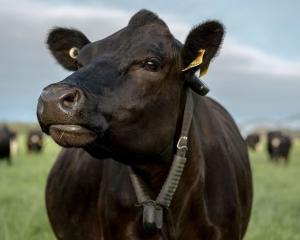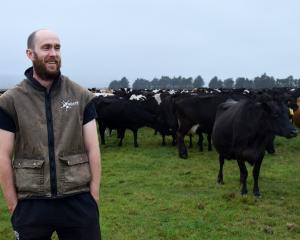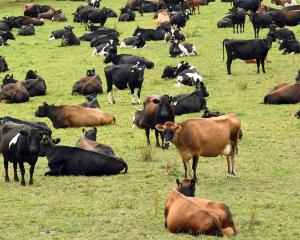Weak world demand and ample milk production will keep world dairy prices under pressure, a report by Westpac economists says.
While exporters weathered China’s outbreak of Covid-19 better than expected, the global spread of the virus would prove more of a challenge.
Westpac was expecting a farm-gate milk price of $7 for the current season, at the bottom end of the forecast range Fonterra has given, and $6.30 for the new season starting in June, although the bank cautioned there was a wide margin of uncertainty around any forecast that far ahead.
Those forecasts were based on a further drop in world dairy prices on top of the 15% decline seen since late January, but a lower New Zealand dollar would provide some buffer for local farmers.
ASB was retaining its ‘‘cautiously optimistic’’ $6.50 forecast for the new season but senior rural economist Nathan Penny noted the down-side risks and suggested farmers start contingency planning for the possibility of a sub-$6 milk price.
ANZ has revised down its forecast for next season by 70c to $5.75, based on changing consumption patterns arising from Covid-19 related shutdowns around the world.
Westpac said demand from food services would be hit hardest while cafes, restaurants and bakeries remained closed.
US-based RaboResearch dairy analyst Tom Bailey said New Zealand dairy prices were ‘‘still hanging in there’’, relatively speaking.
Overall prices fell 0.8% in this week’s GlobalDairyTrade auction, and total volumes sold were 20% lower, aligned to seasonal declines and broad expectations.
The Westpac report said the global supply of milk had remained ample and production among the major exporting regions was up 1% in February compared with last year.
The European Milk Board was now calling for voluntary reductions in milk production while the US, lacking such an organising body, had effectively resorted to ‘‘pouring excess milk down the drain’’.
The problem was partly due to limited processing capacity, due to lockdowns and physical distancing, but weak demand was also an issue.
Southern hemisphere production had not been hit as hard as feared. Australian milk collections were up on last year, despite the bushfires this summer.
The impact of drought conditions in New Zealand has been relatively small and March milk collections were down by less than 2% compared with last year.












